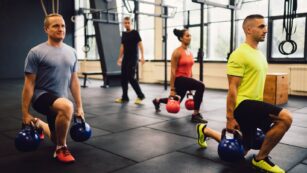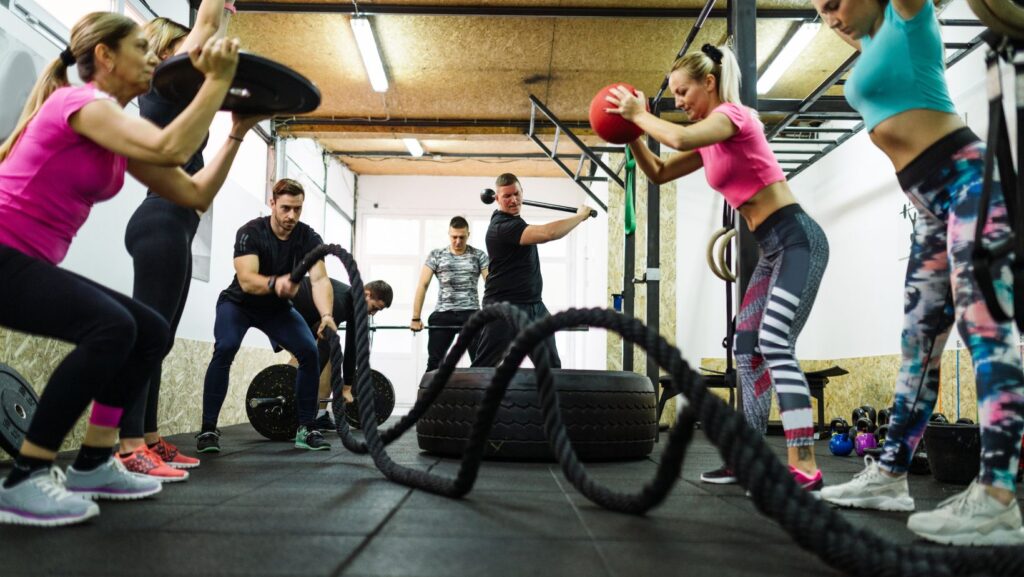Runners often focus solely on pounding the pavement to improve their endurance and speed, but incorporating cross-training exercises can elevate their performance to new heights. These activities not only enhance overall fitness but also reduce the risk of injury, ensuring runners stay on track toward their goals. From swimming to cycling, cross-training offers a refreshing break from routine, engaging different muscle groups and boosting cardiovascular health.
Cross Training Exercises for Runners
Cross training exercises enrich a runner’s routine, boosting fitness levels and decreasing the likelihood of injuries. These exercises also ensure that the runner’s regime remains varied, reducing boredom and increasing motivation.
Improved Cardiovascular Fitness
 Engaging in various forms of cardiovascular exercises, such as swimming or cycling, significantly enhances a runner’s heart health. Swimming serves as an excellent alternative, offering a full-body workout that elevates heart rate while also being gentle on the joints. Cycling, on the other hand, increases endurance and stamina without the high impact of running. Both activities increase lung capacity and efficiency, which are crucial for long-distance running.
Engaging in various forms of cardiovascular exercises, such as swimming or cycling, significantly enhances a runner’s heart health. Swimming serves as an excellent alternative, offering a full-body workout that elevates heart rate while also being gentle on the joints. Cycling, on the other hand, increases endurance and stamina without the high impact of running. Both activities increase lung capacity and efficiency, which are crucial for long-distance running.
Incorporating exercises such as yoga and Pilates into a cross-training routine contributes to greater flexibility and core strength, which can help prevent injuries by improving balance and muscle coordination. These activities also promote faster recovery post-injury by allowing muscles to heal while still being engaged in low-impact exercise. Regular inclusion of strength training can further prevent injuries by supporting the muscles used in running and enhancing overall body stability.
Popular Cross Training Exercises for Runners
Cross training serves as an essential strategy for runners looking to enhance their performance and decrease injury risk. This section delves into some of the most effective exercises that complement running, providing both physical benefits and a refreshing variety in training routines.
Swimming for Low-Impact Cardio
 Swimming stands out as a prime choice for runners due to its low-impact nature. It allows athletes to maintain cardiovascular fitness without stressing their joints, making it ideal for recovery days or for runners experiencing joint pain. The resistance of water also offers a comprehensive workout that engages multiple muscle groups, including the core and upper body, which are less utilized in running. This full-body engagement helps improve overall fitness, which can translate into more efficient running.
Swimming stands out as a prime choice for runners due to its low-impact nature. It allows athletes to maintain cardiovascular fitness without stressing their joints, making it ideal for recovery days or for runners experiencing joint pain. The resistance of water also offers a comprehensive workout that engages multiple muscle groups, including the core and upper body, which are less utilized in running. This full-body engagement helps improve overall fitness, which can translate into more efficient running.
Cycling is another highly beneficial cross-training exercise for runners. It targets the cardiovascular system and helps build endurance and leg strength with minimal impact on the joints. Regular cycling sessions contribute to stronger leg muscles, which support a runner’s pace and reduce the energy expenditure during long-distance runs. Moreover, cycling can help increase the length of workout sessions, thereby boosting aerobic capacity and endurance.
Strength Training for Muscle Balance
Incorporating strength training into a runner’s routine is crucial for muscle balance and injury prevention. Exercises like squats, deadlifts, and lunges strengthen the legs and hips, critical areas for runners. Additionally, upper body strength training, including workouts like push-ups and rows, ensures a well-balanced physique, preventing muscle imbalances that could lead to overuse injuries. By improving overall strength, runners can achieve a more powerful and efficient stride, enhancing both speed and endurance.
Planning a Cross Training Schedule
 Adopting a structured cross-training schedule can significantly bolster a runner’s performance. By integrating activities such as swimming, cycling, and strength training into their routine, runners can enjoy the dual benefits of improved endurance and reduced injury rates. It’s essential for runners to listen to their bodies and adjust their training intensity based on their recovery and overall fitness levels.
Adopting a structured cross-training schedule can significantly bolster a runner’s performance. By integrating activities such as swimming, cycling, and strength training into their routine, runners can enjoy the dual benefits of improved endurance and reduced injury rates. It’s essential for runners to listen to their bodies and adjust their training intensity based on their recovery and overall fitness levels.
Moreover, diversifying workouts with yoga or Pilates can enhance core strength and flexibility, crucial for maintaining form and efficiency during runs. This varied approach not only keeps the regimen interesting but also ensures all muscle groups are engaged and strengthened.
Ultimately, runners looking to optimize their training outcomes should consider cross-training as a strategic component of their fitness plan. This method not only helps in achieving peak performance but also in sustaining a healthier and more enjoyable running journey.

